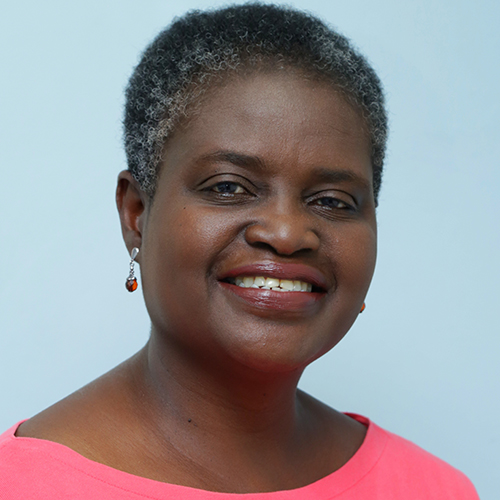At the end of September, the World Bank approved a USD 6.3 million grant (EUR 5.4 million), financed by the Global Environmental Facility, “to support Eastern Caribbean policy-makers in identifying smart policies to harness the ocean and all its natural assets, and prepare for a successful transition to a blue economy and socially equitable ‘blue growth.'”
Among the recipients of that grant was the island of Grenada, which is pioneering the development of a blue economy in the region. The island, which was devastated by the Category 5 Hurricane Ivan in 2004, expects to double its GDP through investments in blue growth.
A recently released World Bank report entitled, “Toward a Blue Economy: A Promise for Sustainable Growth in the Caribbean,” explains the need for a blue economy:
“Driven by a growing global population and the need for new sources of growth, the ocean is becoming more and more an economic frontier, a dynamic three-dimensional environment where resources are rich and varied and shift from depths to surface or migrate over long distances.”
Further, it states, “the Caribbean Sea’s ecosystems and natural resources form a unique asset for the region’s countries and territories, and that understanding and measuring the economic activity that is tied to this 'natural capital' asset is essential for sustainably growing the region’s economies.”
The report states that, in 2012, the Caribbean earned more than USD 400 billion (EUR 343.8 million) in revenues from ocean-related activities. It advocates for “the transition of the current ocean economy to a 'blue economy' with 'blue growth.' This vision foresees even higher numbers of people making their livings from the ocean, but in ways that protect its resources and ecological integrity.”
The blue economy would thus focus on making ocean-based economic activities as sustainable as possible.
Grenada expects major economic growth as a result of the transition it is currently undertaking, Olando Harvey, a national marine biologist with the Grenada Fisheries Division, told SeafoodSource.
“The Grenada Blue Growth Master plan has identified potential investment options with attractive returns valued at over USD 1 billion (EUR 859 million) – around 200 percent of GDP,” he said, in an email.
“Grenada is 19 kilometers long with a coastline of 121 kilometers and an exclusive economic zone (EEZ) in the sea of 26,000 km2; therefore, if properly planned, the carrying capacity of the marine/coastal ecosystems can generate blue growth exports and/or jobs in a range of sectors,” Harvey said.
The World Bank report notes that “coastal and marine spatial planning, with the oceans envisaged as 'development spaces.'” would allocate “ocean uses over space and time to achieve specific economic, ecological, and social objectives. In the same way that land zoning regulates land uses, coastal and marine spatial planning can create ocean zoning, with maps categorizing marine space for particular uses.”
Among the sectors under consideration by Grenada for development are the following:
- Marine fisheries facilities including fishing fleet docks, moorings and slips, fish processing and ice plants, fish markets, and transport facilities, as well as facilities for aquaculture activities either in the water or on land.
- Marine research into potential benefits from the ocean’s biological resources and unique environment by academic, private, government, and international institutions.
- Marine businesses related to the boating industry, including boat building and manufacturing, boat financing and insurance, boat registration, and boat chartering.
- All ocean-based recreational activities along with facilities to accommodate fishing, boating, diving, snorkeling, surfing, kayaking, hiking and educational excursions, as well as tourism and cruise ship accommodation and amenities.
Grenada will also invest in the fisheries sector to promote greater harvesting of currently underutilized fishing stock, including squid and algae, and to make full use of fish catch, including what is usually discarded such as bones and scales.
Grenada's fishing industry currently employs approximately 10,000 people, of whom 4,500 are fishermen. In 2016, it exported two million pounds (907,185 metric tons) of fish valued at just under XCD 17,000,000 (USD 6,300,000, EUR 5,329,000).
At the same time, the country's experience with Hurricane Ivan, which destroyed 90 percent of its buildings and required years of recovery effort, underscores the need to protect its coastal environment.
Grenada has therefore developed an Integrated Coastal Zone Management Policy (ICZM Policy) which formally defines Grenada’s coastal zone and addresses the impact of climate change on its coast. It has also begun establishing a system of marine and terrestrial protected areas.
However, efforts to safeguard Grenada's natural capital require cooperation with other states in the region that share the same ecosystem.
The “Toward a Blue Economy” report notes, “In efforts toward order and consistency, governments and development partners have launched a number of regional initiatives concerning the Caribbean Sea’s natural capital.”
Among these is the Caribbean Regional Oceanscape project that received the USD 6 million grant. Another is the Caribbean Large Marine Ecosystem project that will enable the region to better assess the state of its ecological systems and devise polices to safeguard its natural capital. Harvey told SeafoodSource that Grenada intends to “become a world leader and international proto-type for blue growth and sustainability.”






